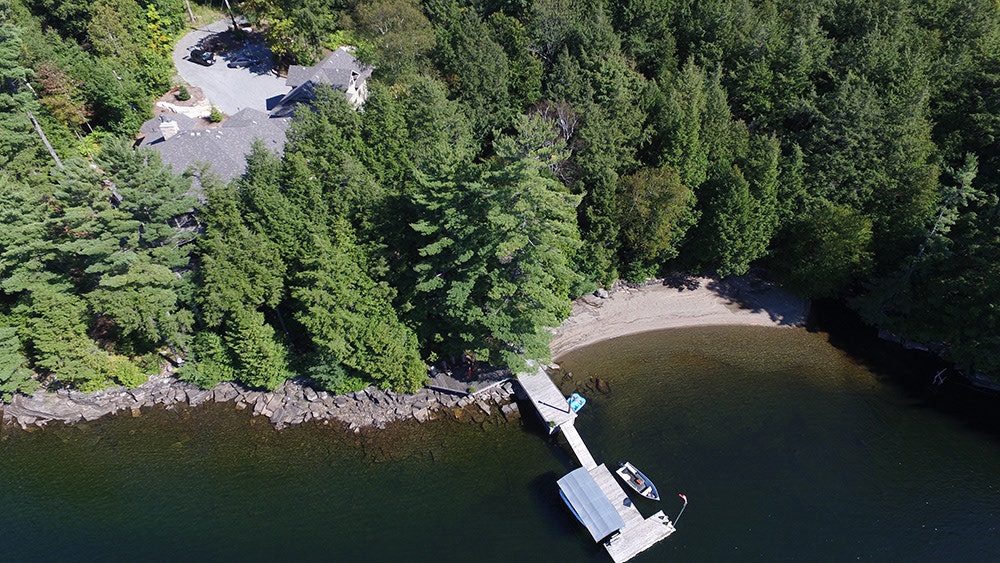After months of consultation, firms hired to undertake a review of the County’s draft shoreline bylaw have called for more flexibility in an easier to read document.
Representatives from J.L Richards and Associates Limited (JLR) and Hutchinson Environmental Sciences Ltd. (HES) summarized 216 pages of research, feedback and early suggestions for bylaw improvement at an Aug. 25 council meeting.
Areas of the bylaw which the firms suggest could be improved include: plainer language; consistent application; flexibility depending on site conditions; consistency with local regulations; using performance-based standards to regulate site activity; streamlining application requirements and broadening the scope of lake health matters that will be referred to council; as well as an efficient transition from current to revised bylaw rules.
Many of the suggestions rely on enhanced bylaw flexibility. For instance, lakes with steep shorelines more at risk of contamination from runoff might have different regulations than lakes with flat waterfront lots. Currently, the draft bylaw is the same no matter the size, shape or orientation of a waterfront property.
“That might make things quite difficult for the people who are going to be managing this document,” said Warden Liz Danielsen, mentioning how lake-specific rules would be tricky to regulate in a County with as many waterbodies as Haliburton. “We’re all going to be very cognizant of the management of enforcement.”
That flexibility could extend to site-specific regulations. For example, currently shoreline construction work must be limited in the instance of strong winds. With performance-based rules, that would determine risk management strategies each firm could have in place.
Thinking of 30 metres
In JLR’s report of existing regulations, they reminded County council of regulations set out by the planning act: any new rules must conform to a municipality’s official plan.
That means a shoreline setback other than 30 metres would not match what’s laid out in the County’s plan. That plan directly refers to a 30 metre setback from a high water mark.
Brett Parsons, a scientist with HES, compared the County’s proposed rule with other municipalities including Gravenhurst, Lake of Bays, Huntsville and Hasting Highlands. He found setbacks between 15-30 metres are common. The province’s Lake Capacity Assessment Handbook also suggests a 30 metre setback for waterbodies on the Canadian Shield.
Coun. Cec Ryall said it appeared the report stood by the initially proposed 30 metre setback: “Would a 20 metre setback compromise anything of what we’re doing?” he asked.
Parsons explained that buffers of nondevelopment of 10 metres remove 65 per cent of sediment while 30 metres is found to remove 85 per cent.
“The length of the buffer and the effectiveness of it all depends on what you deem to be effective,” Parsons told council. He also said site conditions determine how much of a setback could limit pollutants entering the water. Most municipalities researched by the consultants required that 75 per cent of a property’s shoreline must be maintained in a natural state.
However, many of the public who addressed the planners at a July 29 special meeting of council said they were concerned a 30 metre setback was overly cautious.
Stakeholders, public have their say
All those who spoke with JLR or HES consultants have remained anonymous, however Jason Ferrigan of JLR assured council they accurately presented the full spectrum of opinions. As of Aug. 25, 783 people responded to a survey on the shoreline bylaw. The report presented to council details a list of stakeholders interviewed.
“Most important is that everyone we’ve spoken to values the lakes and waterbodies in the County,” he said.
Members of council and the public said there were other public policy objectives that were more important to address than the rules surrounding shoreline development.
“The lakes are still in pretty good shape based on the reports we have,” said Coun. Walt McKechnie. He mentioned other lake issues are similarly important: “To me I’m hearing concerns like in Head Lake with (Eurasian) Watermilfoil.”
Coun. Carol Moffatt said jurisdiction of lake activities is also a challenge: “the problem is that the jurisdiction of whatever is happening out on the lakes is not ours,” she said.
Whatever bylaw eventually is passed by council will likely be far easier to read.
For the public to accurately understand whatever rules are decided on, Ferrigan suggested revising the bylaw’s wording or including a “Coles Notes” version to summarize the rules.
“Our sort of approach is to write short bylaws that are performance based and outcome focused.”
Ferrigan said the current bylaw is quite lengthy, meaning the “average citizen” might not even read the whole thing.
After presenting their findings to council, the consultants will continue working in the community to determine clear recommendations and a final draft bylaw County council will discuss.
“We provide you with the options,” Ferrigan said. “At that meeting you decide which options you want to take.”
To read the full report of work and research completed so far, visit haliburton. civicweb.net/portal/





